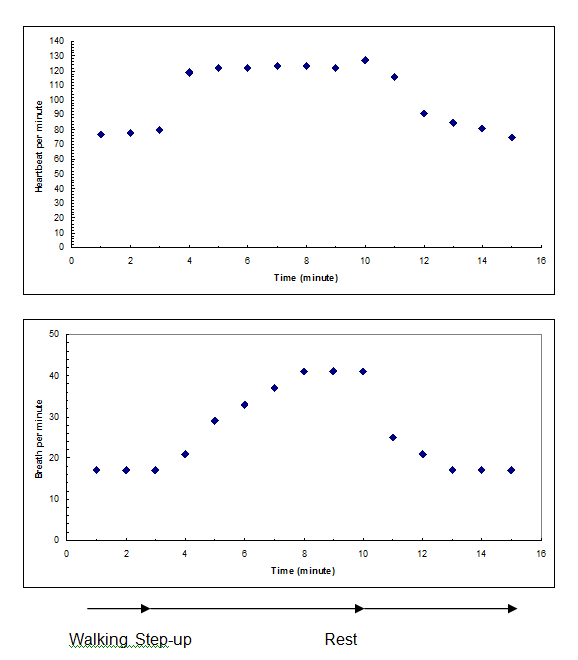| Learning Aims: |
| The pupils are to be able to investigate how the pulse and breathing vary during different activities and to be able to report these results graphically. The pupils are to explain why we need oxygen and realize that we need more oxygen the more work we undertake. They are also to be able to explain the difference between aerobic and anaerobic respiration, and to explain the connection between pulse rate and rate of breathing during and after physical activity. |
| Subejct: |
| Biology |
| Materials: |
| Timepiece (watch, mobile telephone), stairs, computer or graph paper. |
| Suggestions for use: |
|
This task gives the pupils the opportunity to plan an investigation and present the data from their experiment graphically. The task is to identify how the pulse and breathing rate vary during different activities, as well as to explain their results. It would be advantageous to carry out this task with the cooperation of the physical education teacher. The pupils work in pairs. It can be a good idea to introduce the exercise in a broader context in order to make it more stimulating and to motivate the pupils. For example, one can use a particular sport as a starting point or ask the question “What makes you breathe faster?” The task consists of several parts:
The pupils are to plan and carry out an investigation where they study the connection between pulse and breathing during static muscle activity and dynamic muscle activity and subsequent rest. Dynamic activity is aerobic as the blood circulates through the muscles. Static activity is anaerobic as one hinders the blood supply and the muscles have to work anaerobically when the oxygen supply has expired. Compare, for example, the exercise “step up” with “sit against the wall”. In the diagram below, an example is given of how some pupils have reported the results of the aerobic activity. The diagram shows that the pulse rate and breathing rate changes over time when various activities are carried out. If the heart beats more times per minute, we also take more breaths. This is because the heart pumps the oxygen into the body and when it pumps more oxygen we also need to breathe in more oxygen. This is the case in aerobic activity. When we work at a slower rate, both the pulse and breathing rates decrease as well. During aerobic training, we achieve a stage where the heart is pumping out as much oxygen as the muscles need, and we breathe adequately to ensure that enough oxygen enters the bloodstream. If we increase the activity level above this, the muscles work anaerobically; that is to say the muscles burn glucose without access to oxygen. Carbon dioxide and lactic acid form. We are only able to work this way for a limited amount of time. Describe the connection between the pulse rate and the breathing rate in the example below.
The diagram shows an example of how the pulse and breathing rates change during an activity. The pupil starts by walking for three minutes at a slow pace. After that, the pupil does a step-up exercise for seven minutes, followed by a period of 5 minutes’ rest. |
